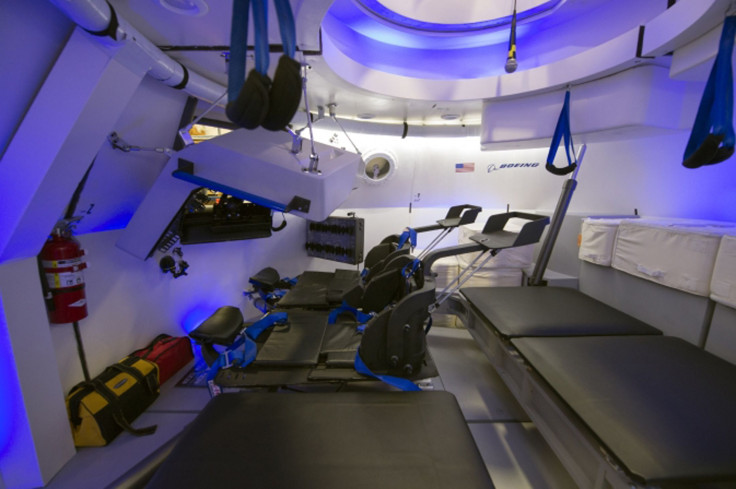NASA Picks Boeing, SpaceX To Build Spacecraft To Ferry Astronauts To And From ISS

NASA has chosen The Boeing Company (NYSE:BA) and SpaceX, a space transport services company headquartered in Hawthorne, California, to build “American spacecraft” to ferry astronauts back and forth from the International Space Station, or ISS, from a base in the U.S., the space agency announced Tuesday.
Boeing and SpaceX were chosen for their CST-100 and Crew Dragon spacecraft, respectively, according to NASA. The space agency has awarded the American companies with Commercial Crew Transportation Capability, or CCtCap, contracts that are valued at a combined $6.8 billion -- $4.2 billion for Boeing and $2.6 billion for SpaceX. NASA's move is aimed at ending U.S. dependence on Russia to fly crews to the ISS by 2017.
“From day one, the Obama Administration made clear that the greatest nation on Earth should not be dependent on other nations to get into space… today we are one step closer to launching our astronauts from U.S. soil on American spacecraft and ending the nation’s sole reliance on Russia by 2017,” NASA Administrator Charlie Bolden said, in a statement. “Turning over low-Earth orbit transportation to private industry will also allow NASA to focus on an even more ambitious mission – sending humans to Mars.”
Under the CCtCap contracts, the companies will have to test at least one manned spacecraft with a NASA astronaut on board to verify that both the rocket and spacecraft system can launch, maneuver in orbit and dock with the space station. After each company’s test program is successfully completed and the systems are certified by NASA, each contractor will conduct at least two, and as many as six, crewed missions to the ISS.
Boeing's CST-100 spacecraft will launch aboard Atlas 5 rockets, which are built by United Launch Alliance, a partnership between Lockheed Martin Corp (NYSE:LMT) and Boeing, while SpaceX, which already has a $1.3 billion NASA contract to fly cargo to the ISS, plans to upgrade its Dragon spaceship to transport astronauts, Reuters reported.
“Our specialist teams have watched the development of these new spacecraft during earlier development phases, and are confident they will meet the demands of these important missions,” Bolden wrote in a blog post.
Reaching ISS Without Soyuz
In April, NASA suspended most of its ongoing engagements with Russia over the country’s violation of Ukraine’s sovereignty when it occupied the Crimean peninsula. However, the suspension did not include cooperation over the space station as Russia’s Soyuz spacecraft remains the only option to send and retrieve crew members from the space station after the U.S. ended its shuttle program in 2011.
However, by flying astronauts commercially from the U.S., NASA could end Russia’s current monopoly on space missions. The agency reportedly pays $70 million for each person ferried by the Russian Soyuz capsules to the ISS.
“It was not an easy choice, but it is the best choice for NASA and the nation,” Bolden said. “Highly qualified, American companies – united in their desire to return human spaceflight launches to U.S. soil – competed to serve this nation and end our reliance on Russia.”
© Copyright IBTimes 2024. All rights reserved.





















